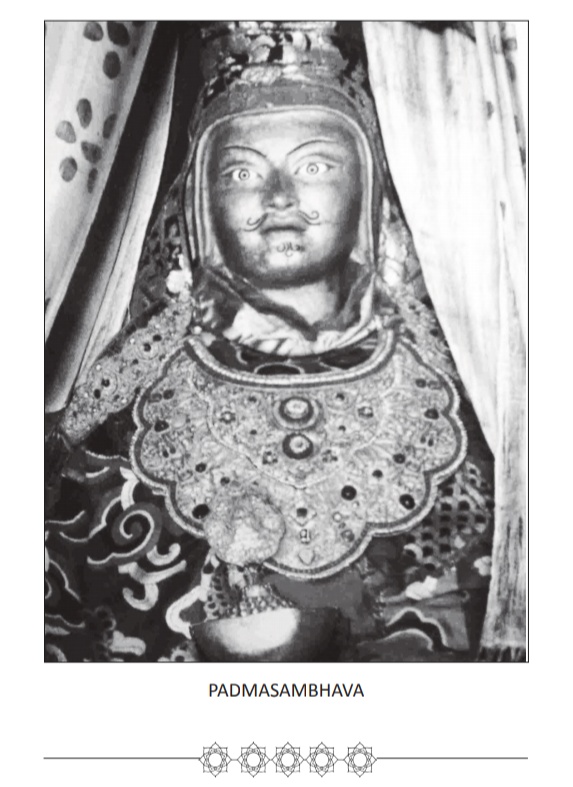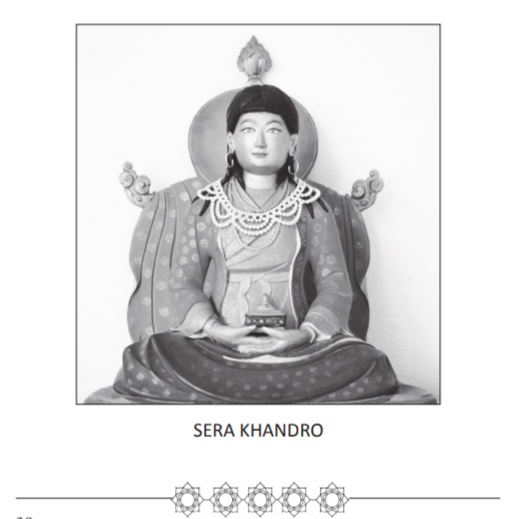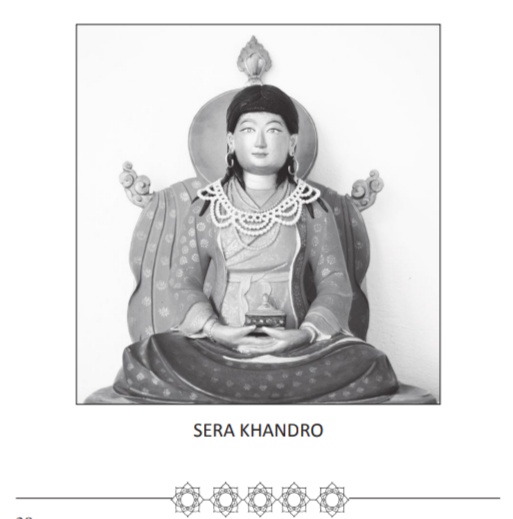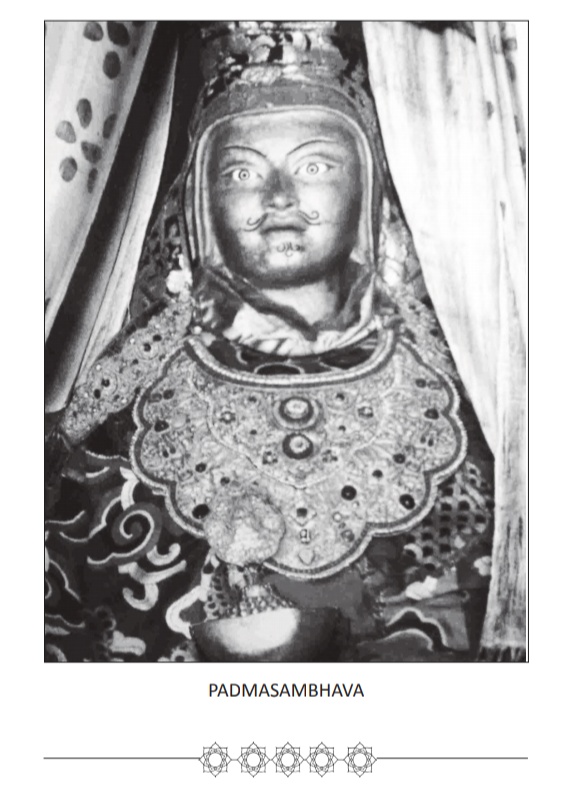

Chapter Five
How wonderful!
Then you, Lotus-Born Master,
Assumed the form of Great Powerful Héruka,
Proclaimed, “Houng! Houng!,” and brought gods and demons under
your control.
You suppressed them with orders and seals, and bound them under oath.
You consecrated the ground for the construction of Samyé.
The Four Great Kings directed the work.
During the day, humans worked; during the night, gods and demons.
Samyé’s walls look like an unusual being.
The monastery’s design replicates Supreme Mountain, the four main
and four adjacent continents.
Samyé’s qualities are inconceivable.
On the temple’s three levels—above, below, and between—
Statues of the peaceful and wrathful deities were sculpted.
During the consecration, when you scattered auspicious flowers,
The deities spoke and a rain of medicine fell.
Flames rose from the commemoration pillar; sculpted copper dogs
barked.
The entire place was filled with amazing, auspicious signs,
Gladdening the king, his ministers, his subjects, and the court.
The land of Tibet became endowed with auspicious portents, virtue
and happiness:
Samyé’s benefits are inconceivable!
This completes Chapter Five from The Immaculate White Lotus: The Life
of the Master from Oddiyana: Construction of the Samyé Temple and its
Consecration.
Om Ah Houng Benza Guru Péma Siddhi Houng


